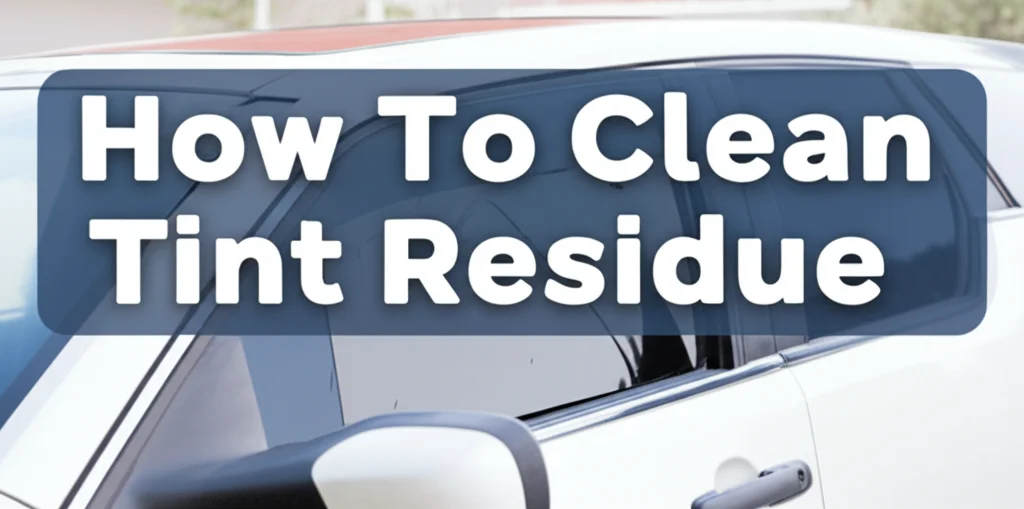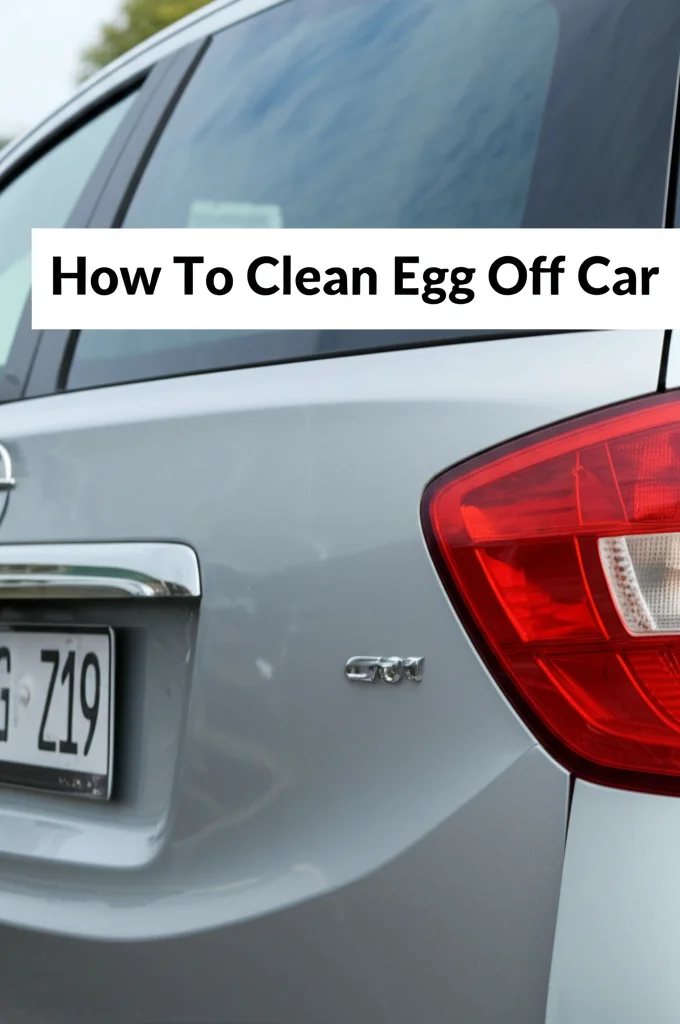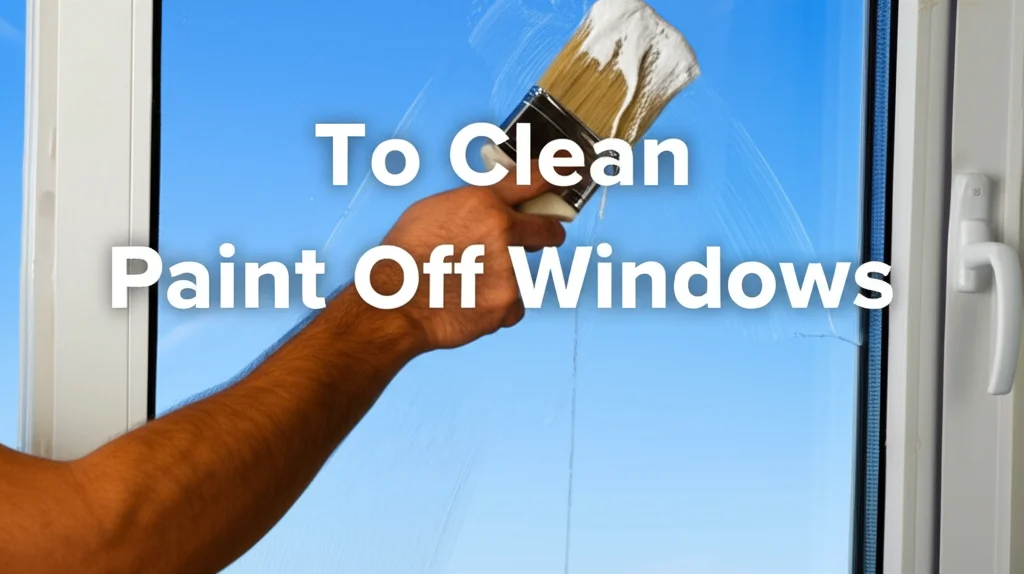· Auto Detailing · 6 min read
How To Clean Tint Residue

Removing Tint Residue: A Clear Guide
Ever removed old window tint and been left with a frustrating, sticky mess? You’re not alone! Cleaning tint residue can seem daunting, but it doesn’t have to be. This article will walk you through effective methods for removing that stubborn adhesive, leaving your windows sparkling clean. We’ll cover everything from DIY solutions to commercial products, ensuring a clear view and a professional finish. Let’s dive into how to clean tint residue and restore your windows to their original glory.
Quick Answer: To clean tint residue, start by softening the adhesive with a dedicated adhesive remover or isopropyl alcohol. Gently scrape away the residue with a plastic razor blade, avoiding metal tools that can scratch the glass. Finish by cleaning the window with glass cleaner for a streak-free shine.
Takeaway:
- Use plastic razor blades to avoid scratches.
- Test any cleaning solution in an inconspicuous area first.
- Patience is key – don’t rush the process.
Understanding Tint Residue & Why It’s Tricky
Window tint adhesive is designed to be strong and durable, holding the film securely to the glass for years. This is great when the tint is on your windows, but it presents a challenge when you want to remove it. The adhesive often hardens over time, becoming brittle and difficult to peel away cleanly. Leaving residue behind not only looks unsightly but can also interfere with the installation of new tint. Successfully removing this residue requires the right tools and techniques.
Choosing the Right Tools for the Job
Before you start, gathering the right tools is crucial. Using the wrong tools can damage your glass or make the job even harder. Here’s a checklist of what you’ll need:
- Plastic Razor Blades: These are essential for scraping without scratching the glass.
- Adhesive Remover: Specifically designed for removing adhesives, these are highly effective.
- Isopropyl Alcohol: A readily available and effective solvent for softening adhesive.
- Glass Cleaner: For the final cleaning step, ensuring a streak-free finish.
- Microfiber Cloths: Soft and lint-free, ideal for applying solutions and wiping surfaces.
- Spray Bottle: For applying the adhesive remover or isopropyl alcohol.
- Heat Gun or Hair Dryer (Optional): Can help soften stubborn adhesive.
DIY Solution: Isopropyl Alcohol to the Rescue
Isopropyl alcohol (rubbing alcohol) is a fantastic, readily available option for tackling tint residue. It’s a solvent that breaks down the adhesive, making it easier to remove. Here’s how to use it:
- Saturate the Residue: Pour isopropyl alcohol into a spray bottle and generously spray the affected area.
- Let it Soak: Allow the alcohol to sit for 5-10 minutes, giving it time to penetrate the adhesive.
- Scrape Gently: Using a plastic razor blade, carefully scrape away the softened residue. Work in small sections and apply gentle pressure.
- Repeat if Necessary: If the residue is particularly stubborn, repeat the process until it’s completely removed.
- Clean with Glass Cleaner: Finish by cleaning the window with glass cleaner and a microfiber cloth for a streak-free shine.
Commercial Adhesive Removers: A Powerful Option
While isopropyl alcohol works well, commercial adhesive removers are often more potent and can tackle even the toughest residue. These products are specifically formulated to dissolve adhesives quickly and effectively.
- Read the Instructions: Always read and follow the manufacturer’s instructions carefully.
- Apply the Remover: Spray the adhesive remover onto the residue, ensuring it’s thoroughly coated.
- Wait for Activation: Allow the remover to sit for the recommended time, usually a few minutes.
- Scrape and Wipe: Use a plastic razor blade to scrape away the softened residue, then wipe clean with a microfiber cloth.
- Final Clean: Finish with glass cleaner to remove any remaining residue and leave a sparkling finish. Consider checking out https://www.beacleaner.com/how-to-remove-sticky-residue-from-vinyl-flooring/ for additional tips on removing sticky substances.
Using Heat to Soften Stubborn Adhesive
Sometimes, even with adhesive removers, the residue remains stubbornly attached. Applying gentle heat can help soften the adhesive, making it easier to scrape away.
- Heat Application: Use a heat gun or hair dryer on a low setting to gently warm the residue. Be careful not to overheat the glass, as this could cause it to crack.
- Test the Temperature: Periodically test the temperature of the glass to ensure it’s not getting too hot.
- Apply Remover: While the adhesive is warm, apply your chosen adhesive remover.
- Scrape Carefully: Use a plastic razor blade to scrape away the softened residue.
- Clean Thoroughly: Finish with glass cleaner to remove any remaining residue.
Preventing Scratches: A Crucial Step
Scratches on your car windows are unsightly and can even affect visibility. Preventing scratches during tint residue removal is paramount.
- Always Use Plastic Razor Blades: Metal blades will almost certainly scratch the glass.
- Apply Gentle Pressure: Avoid pressing too hard with the razor blade. Let the adhesive remover do the work.
- Keep the Blade Clean: Regularly wipe the blade with a microfiber cloth to remove any accumulated residue.
- Work in Small Sections: This allows for more control and reduces the risk of scratching.
- Inspect Regularly: Check the glass frequently for any signs of scratching. If you notice any, stop immediately and reassess your technique. If you’re dealing with other floor issues, you might find https://www.beacleaner.com/how-to-clean-hardwood-floors-with-vinegar/ helpful.
Dealing with Extremely Old or Baked-On Residue
Older tint residue, especially if it’s been exposed to sunlight for years, can become incredibly difficult to remove. This is where patience and persistence are key.
- Multiple Applications: You may need to apply adhesive remover or isopropyl alcohol multiple times, allowing it to soak for longer periods.
- Heat and Remover Combination: Combine heat with adhesive remover for maximum effectiveness.
- Gentle Scraping: Continue scraping gently with a plastic razor blade, working in small sections.
- Consider a Professional: If you’ve tried everything and the residue still won’t budge, consider taking your car to a professional detailer. They have specialized tools and expertise to handle even the most challenging situations.
FAQ: Your Tint Residue Questions Answered
Q: Can I use a metal scraper to remove tint residue?
A: Absolutely not! Metal scrapers will almost certainly scratch your car windows. Always use plastic razor blades.
Q: Will adhesive remover damage my car’s paint?
A: Most adhesive removers are safe for car paint, but it’s always best to test in an inconspicuous area first. Avoid getting the remover on painted surfaces if possible.
Q: How long does it take to remove tint residue?
A: The time it takes depends on the age and condition of the residue. It can range from 30 minutes to several hours.
Q: Is it possible to remove tint residue without any chemicals?
A: It’s very difficult, but some people have had success using a combination of heat and a lot of elbow grease. However, chemicals generally make the process much easier and more effective.
Conclusion: Enjoying a Clear View
Cleaning tint residue can be a bit of a chore, but the reward – a clear, unobstructed view – is well worth the effort. Remember to use the right tools, be patient, and prioritize preventing scratches. Whether you choose isopropyl alcohol or a commercial adhesive remover, the key is to soften the adhesive and gently scrape it away. Don’t hesitate to seek professional help if you’re facing a particularly stubborn situation. Now that you know how to clean tint residue, you can enjoy a safer and more enjoyable driving experience. For other cleaning challenges, explore https://www.beacleaner.com/how-to-clean-bathroom-floor-without-mop/ for helpful tips.




